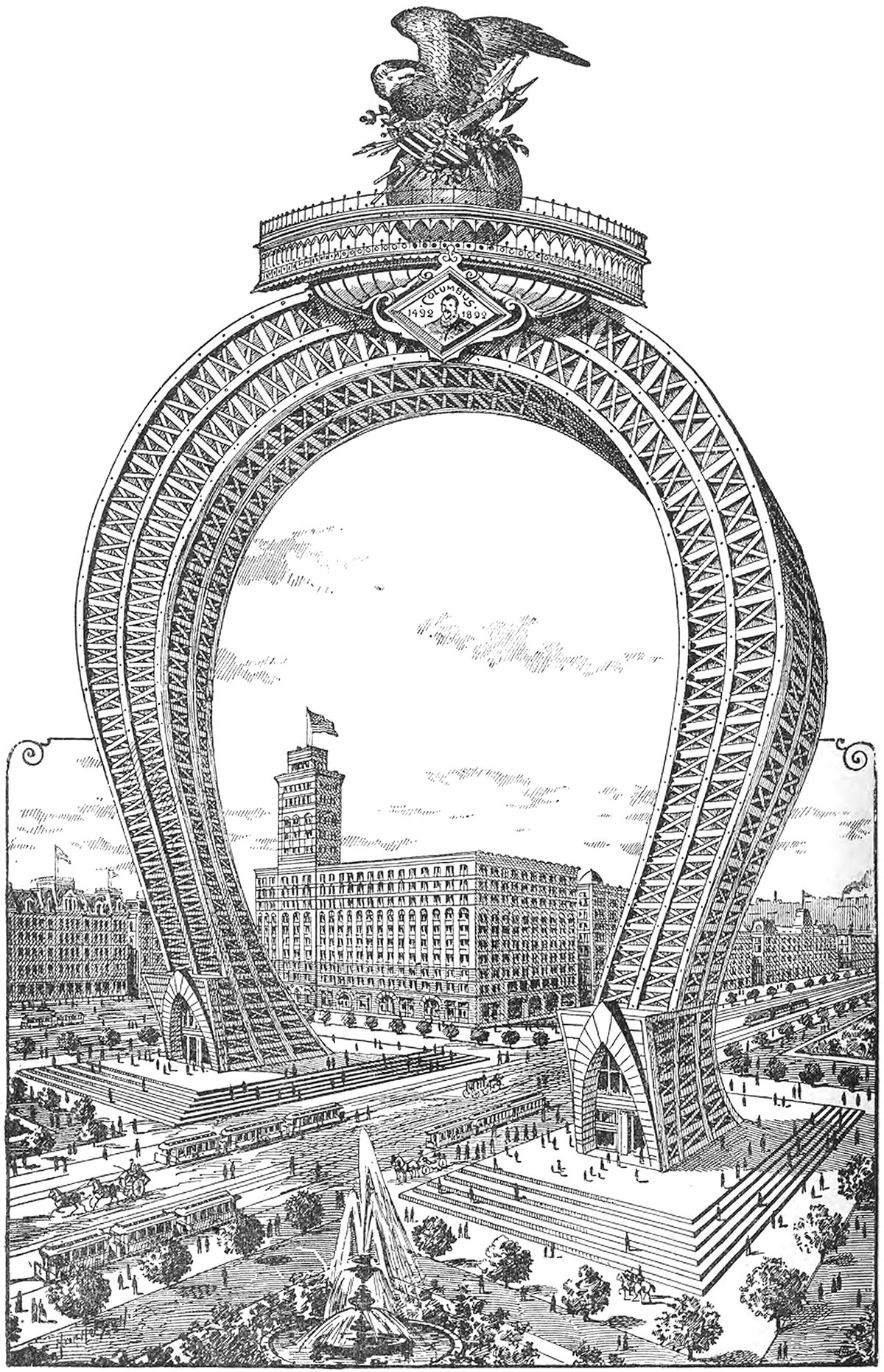The Columbian Triumphal Arch
Engraving of a proposal for a triumphal arch for the 1893 World’s Columbian Exposition in Chicago.
Here’s a doozy. It’s an 1891 proposal for a monumental arch that would’ve been the crown of the 1893 World’s Columbian Exposition in Chicago. It would’ve straddled South Michigan Avenue on the block adjacent to the Auditorium Building, which can be seen just behind the arch in the illustration. I can’t find any information on the designer, but whoever drew it up was no stranger to the Daniel Burnham quote make no small plans. It was borne out of a world-wide fascination for the newly-built Eiffel Tower, and the perceived need for subsequent World’s Fairs to out-Eiffel France. The structure was to be 990 meters (3,250 feet) tall, which is more than three times the height of the Eiffel Tower. Out-Eiffel France, indeed.
The structure is essentially a horseshoe-shaped arch made of wrought-iron, with a complex latticework that’s reminiscent of the Eiffel Tower. At the top is a circular platform with a massive statue in the center. This statue shows us the designer’s intent. It consists of an Eagle perched atop the earth. The statue is then perched atop the arch. This vertical stacking of elements is a metaphor for the arch and the exhibition as a whole. First, the exhibition would lead to the construction of the world’s tallest structure (the arch). This structure would then raise the status and accomplishments of the entire human race (the earth). Atop all of this is the United States (the eagle), who would be responsible for said construction, and thus the elevation of humanity. In effect, the designer was asserting the power and dominance of the United States to the rest of the world, and he was using verticality to do it.
The designer also used the illustration itself to demonstrate his intent. Have a look at the frame at the bottom half of the drawing. The horseshoe bursts through this frame and continues for more than half its entire height. The arch is so tall that it transcends the surface world and occupies the sky. The original illustration (the frame) wasn’t big enough to house it. In a way, the illustrator was telling us that a trip to the top would be akin to escaping the surface world. It was akin to achieving verticality.
This proposal was one of a few tower designs put forward for the 1893 World’s Columbian Exposition. Taken together, they represent a perception that the United States must out-Eiffel France by building the world’s tallest tower. In effect, the United States, and ultimately the world, was competing with France by means of verticality. Having the tallest building in the world projects a sense of power and dominance over the rest of the world, and any country would be keen to have this power over others.
Check out other posts about unbuilt architecture here.
Proposal originally published in: Cutler, H.G.. The World’s Fair: It’s Meaning and Scope. Chicago: Star Publishing Company, 1891. 525-527.

